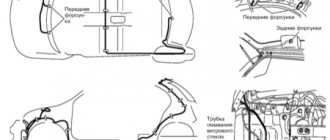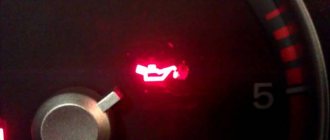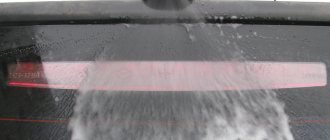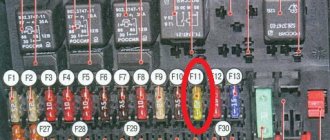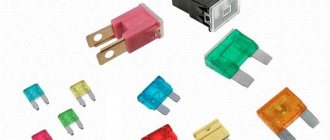Nowadays it is impossible to imagine a car without a windshield washer. After all, every driver is accustomed to the fact that dusty glass can be easily cleaned with the help of washer fluid sprayed from sprayers on demand, and wipers that wash away road dust and insects from the windows.
But then the unexpected happened - the washer 2110 developed a malfunction, and, of course, it stopped working. So what should we do now? Should I wash the glass with a regular cloth and water? Don't panic right away - the breakdown can be easy.
Device failure due to mechanical reasons
Typically, the root cause of a 2112 windshield washer failure can be either mechanical or electrical. Sometimes problems can be recognized by sound, or identified by carrying out a simple test.
- It is possible that the glass with the mesh is clogged with dirt or other deposits, as a result of which the pump can no longer pump car fluid. Having removed the tank, you can easily determine what should be done: replace the glass with a mesh or simply rinse it.
- Having decided to save money, during the hot period they did not use anti-freeze, but filled the car with plain water. But then the cold weather arrived, and the water was not removed from the hoses. And water, as you know, tends to freeze. The pump simply cannot cope with such a problem. In this case, even the fact that an anti-freeze agent was added in the winter will not help. What to do? Warming up and placing the car in a warm garage can solve the problem, you just have to wait until the water in the hoses begins to melt, then the pump can pump it out and remove it.
- In addition to the situation described above, due to heavy loads, the windshield washer motor shaft is often damaged . Such a breakdown can be determined by ear - the motor seems to be working, but the pump does not pump anything. If this breakdown occurs, the entire mechanism will need to be replaced.
- The hose may come off, and the auto fluid flows out somewhere past the injectors. Everything is simple here - just fix it, and everything will work.
- The hose that goes through the injectors may be pinched. Here you need to look at the situation, you may have to order a replacement.
- Dirt and sediment are clogged in the spray nozzles. How can I check this? It's very simple - remove the hose and see if liquid flows through it. Only replacing the nozzles can help here.
How to disassemble the washer motor of a VAZ 2110
Repairing the windshield washer motor (or rear window, or headlight washer) is quite possible, but many drivers are forced to buy a new motor, which costs more than two thousand on some foreign cars.
In addition, replacing a new motor at some auto repair shop can cost about a thousand rubles. In this article, we will look in detail at how to restore the normal operation of a windshield washer motor or a headlight washer motor with our own hands - the operating principle and device are almost the same, and therefore the malfunctions are also the same. If the washer system, both windows and headlights, fails, driving, of course, becomes uncomfortable and unsafe, and since in most regions wet and slushy weather occurs almost throughout the year, using a cloth and a bottle of water becomes quite tiresome, yes and this is undignified, especially if the car is not cheap.
Of course, for some inexpensive foreign cars and domestic cars, the washer motor is not expensive and it is easier to replace it with a new one than to tinker with the old one, but for some imported cars of reputable brands, spare parts are still quite expensive. Therefore, it makes sense to restore the glass washer of such cars on your own, and the repair may take quite a bit of time. And we’ll talk below about how to make it at home.
Malfunctions of the glass or headlight washer.
The main malfunction that subsequently causes a glass washer or headlight washer to stop working is the wear of the rubber seal, which sits on the electric motor shaft and separates the electric motor itself from the part of the washer in which the impeller is located and the liquid for spraying the glass is constantly present (or circulating). When the oil seal wears out, liquid begins to seep between it and the shaft and enters the cavity of the electric motor, as well as onto the bushings and armature shaft.
As a result, corrosion appears on the electric motor shaft and its bushings (and not only), from which the motor armature shaft jams (especially when the washer is not used for several days) and the motor stops working. Getting rid of such a malfunction is not at all difficult, but for this, as surgeons say, an autopsy will be required.
You can, of course, simply develop the shaft by removing the impeller from the shaft and rotating it manually, but this will not last long and it is better to disassemble everything, clean it, restore the mobility of the motor armature shaft and then lubricate the bushings and reassemble the pump.
Most windshield washer pumps are made to be non-dismountable, and the plastic housing is sealed at the factory. But you can open the case using a hacksaw blade for metal, if you carefully walk it in a circle in the area of the step of the case. Why in the area of the steps, and not in the middle of the building? Because the step on the body will allow you to make a straight cut, focusing on it, and during further assembly it will be more convenient to solder (or glue) the body in the area of the step.
Having cut the washer body, carefully separate its halves using a screwdriver (or knife) - see photo 1, after separating the plastic body, you need to remove the stator (see photo 2 below) and carefully remove the armature (or rather its collector) from it motor brushes without bending the brush plates. The disassembled pump is shown in photo 2 below.
Next, we remove corrosion from the cavity of the electric motor, but we especially carefully clean (to a shine) the armature roller in the area of its friction in the bushings - see photos 3 and 4 below, and we also clean the bushings themselves from oxides with fine sandpaper. After cleaning, we check the free rotation of the electric motor armature in the stator (housing) bushings.
Electrical causes of failure
- The fuse has blown. This can be checked by looking in the fuse box.
- The 2110 washer motor is equipped with terminals and leads that could oxidize or even fall off.
- The switch located on the steering wheel of the car may also fail. The operation of the washer switch can be checked using a multimeter.
- The root cause why the VAZ 2110 windshield washer does not work may lie in faulty wiring. To fix it, you will have to change the wires.
- The relay may also be faulty. It cannot be repaired; it is best to replace it with a new one.
Pump parameters
When replacing a windshield washer pump, you must select a device similar to the previously installed one.
A certain device with the factory designation 2010-5208009 is suitable for the VAZ 2110 car.
We present in the table the main indicators and characteristics of the device.
| Parameter | Index |
| Operating temperature range | -40 to +125 degrees Celsius |
| Rated voltage | 12V |
| Dimensions | 108x45x37 millimeters |
| Weight | No more than 120 grams |
| Current consumption | No more than 4.5 A |
| Developed pressure | Minimum 0.25 MPa |
| Fluid flow | Not less than 30 ml/sec |
Removing the barrel
To remove the windshield washer barrel, you will need:
- First of all, disconnect the negative terminal from the battery.
- Disconnect the block from the sensor that measures the liquid level.
- Disconnect the connectors from the electric pump motor. When reassembling the VAZ 2110 windshield washer, you should remember: the positive terminal has a pink wire, the negative terminal has a black wire.
- To empty the barrel, you need to open the lid and take out a cup with a mesh.
- Unscrew the bolt from the fastening nut, not forgetting about the washer installed under the bolt head.
- Then you need to lift the tank and remove it from the studs.
- If there is windshield washer fluid left in the barrel, then to remove it, you need to cover the hole and disconnect the hose from the fitting. The drained auto fluid can be safely used in the future, and therefore it is worth using clean dishes for its temporary storage.
Main problems
All existing faults with the front washer can be divided into two main types, which have their own sub-problems, so to speak. We invite you to familiarize yourself with them in the table.
Fault type
Failure options
The washer fluid reservoir is empty
But each of these faults deserves a more detailed consideration.
Mechanical breakdowns
It is with mechanical washer malfunctions that owners of the VAZ 2110 most often encounter. This is compared with the regularity of electrical problems.
- The washer fluid tank is empty. Inexperienced drivers often start blaming a faulty pump, although in practice they simply forget to check the antifreeze level in the tank. Hence the unjustified costs for the services of service stations. Don’t forget to check the fluid level, and in winter, be sure to drain the regular washer fluid and fill it with anti-freeze in its place. Ordinary water at subzero temperatures will turn into ice, and therefore will not be able to take part in cleaning the windshield. If you still forget to drain and the water freezes, warm up the car for a while so that the ice melts, then drain and fill with a suitable liquid.
- The hose fell off. Anti-freeze is supplied from the tank to the windshield using a pump and special hoses. If these same hoses begin to jump out of their places, the liquid will not be able to flow to the nozzles. As a result, the washer does not function. Try to secure them better. And if they are worn out, simply replace the old hoses with new ones. If the mounting is normal, water may still not flow to the nozzles. In this case, check whether the hoses are pinched.
- The injectors are clogged. The anti-freeze agent, supplied by a pump and passing through hoses, then exits onto the windshield using nozzles. These are the same small devices from which streams of water come. If they are dirty, disconnect the hoses from the injectors and check their condition. Often the problem lies in the jets. They are easy to clean, but in some situations they may need to be replaced.
Electrical breakdowns
Although mechanical failures are more common, electrical problems should not be forgotten.
- The fuse has blown. If, when you turn on the device for cleaning the windshield, the pump does not show signs of functioning, there is a fairly high probability that the cause is a failed fuse. Check its condition. If the device really burns out, you can simply replace it with a new one.
- The switch does not work. If the pump stops working, but the fuse is intact, then the problem may be a faulty steering column switch. To check this, do a little system testing. But for this you will need an assistant. Turn on the ignition and ask a friend to turn on the washer. In this case, go to the pump yourself and check for voltage in it. If there is voltage but no functionality, you will have to change the motor, that is, the pump. If there is no voltage, then the culprit is a switch, relay or wiring. Check everything. Replace what is necessary.
- The clamps have oxidized. Be sure to check the condition of the pump terminals. It’s not uncommon for wiring to oxidize due to moisture and literally fall apart over time. If this happens to your washer, try to properly replace the damaged wiring.
Installing and removing the pump
There is auto fluid in the 2112 windshield washer, but it does not come from the nozzles, then the pump or the VAZ washer motor may have broken down. However, you should first make sure that the fuse wiring is working properly. If the problem is with the electric motor, then all that remains is to replace it. But, unfortunately, to do this, you need to change the entire pump.
Installing this design is quite simple:
- Before installation, first of all, you should find a replacement rubber seal
- It is necessary to install the pump in its seat.
- After this, you need to connect the hose, having first checked that there is no auto fluid in the barrel.
- Having done all of the above, you will need to connect the power wires correctly.
That's it, the pump is ready for use. You can remove the pump by following the steps in reverse order.
Main problems
All existing faults with the front washer can be divided into two main types, which have their own sub-problems, so to speak. We invite you to familiarize yourself with them in the table.
| Fault type | Failure options |
| Mechanical problems | The washer fluid reservoir is empty |
| The hose fell off the pump | |
| The injectors are clogged | |
| Electrical faults | Fuse burned out |
| The clamps have oxidized | |
| The switch is broken |
But each of these faults deserves a more detailed consideration.
Mechanical breakdowns
It is with mechanical washer malfunctions that owners of the VAZ 2110 most often encounter. This is compared with the regularity of electrical problems.
- The washer fluid tank is empty. Inexperienced drivers often start blaming a faulty pump, although in practice they simply forget to check the antifreeze level in the tank. Hence the unjustified costs for the services of service stations. Don’t forget to check the fluid level, and in winter, be sure to drain the regular washer fluid and fill it with anti-freeze in its place. Ordinary water at subzero temperatures will turn into ice, and therefore will not be able to take part in cleaning the windshield. If you still forget to drain and the water freezes, warm up the car for a while so that the ice melts, then drain and fill with a suitable liquid.
- The hose fell off. Anti-freeze is supplied from the tank to the windshield using a pump and special hoses. If these same hoses begin to jump out of their places, the liquid will not be able to flow to the nozzles. As a result, the washer does not function. Try to secure them better. And if they are worn out, simply replace the old hoses with new ones. If the mounting is normal, water may still not flow to the nozzles. In this case, check whether the hoses are pinched.
- The injectors are clogged. The anti-freeze agent, supplied by a pump and passing through hoses, then exits onto the windshield using nozzles. These are the same small devices from which streams of water come. If they are dirty, disconnect the hoses from the injectors and check their condition. Often the problem lies in the jets. They are easy to clean, but in some situations they may need to be replaced.
Pump and reservoir
Electrical breakdowns
Although mechanical failures are more common, electrical problems should not be forgotten.
- The fuse has blown. If, when you turn on the device for cleaning the windshield, the pump does not show signs of functioning, there is a fairly high probability that the cause is a failed fuse. Check its condition. If the device really burns out, you can simply replace it with a new one.
- The switch does not work. If the pump stops working, but the fuse is intact, then the problem may be a faulty steering column switch. To check this, do a little system testing. But for this you will need an assistant. Turn on the ignition and ask a friend to turn on the washer. In this case, go to the pump yourself and check for voltage in it. If there is voltage but no functionality, you will have to change the motor, that is, the pump. If there is no voltage, then the culprit is a switch, relay or wiring. Check everything. Replace what is necessary.
- The clamps have oxidized. Be sure to check the condition of the pump terminals. It’s not uncommon for wiring to oxidize due to moisture and literally fall apart over time. If this happens to your washer, try to properly replace the damaged wiring.
Replacing injectors
The VAZ 2110 washer has jet windshield washer nozzles. The big disadvantage of these nozzles is the excessive consumption of anti-freeze or any other liquid, as well as the small area for spraying the glass. You can, of course, adjust them a little, or you can even replace them with fan or double windshield washer injectors. Thanks to such sprayers, liquid consumption will be reduced (by about 1.5-2 times).
What is the difference between standard jet nozzles and fan nozzles? First of all, a jet nozzle tends to shoot out one or two jets of liquid, which are controlled using special tools. A fan injector is a more modern solution, because it can be used to cover a larger area of the windshield. It differs from a jet sprayer in the special design of the nozzle, as well as in the high pressure in the washer system.
However, fan nozzles also have disadvantages:
- The fan injector quickly becomes covered with an ice crust at subzero temperatures. The problem can be solved, you just need to purchase a heating system.
- If a large amount of liquid gets on the glass, there is a chance of reduced visibility for a few seconds before the wipers turn on.
However, the disadvantages of fan nozzles mentioned above are not as significant as those of jet nozzles.
Why is it needed?
What does a driver do if a layer of dust or some kind of dirt suddenly contaminates the windshield on the street? That's right, he presses a special lever under the steering wheel of his VAZ 2110, turns on the washer pump, which, in turn, interacts with the wipers and removes all this debris . What if the pump fails? Then there are two options:
- Drive further, do not stop, looking through the dirty windshield, or even look at the road, leaning out through the side window;
- Stop, wipe the windshield by hand and continue driving.
The second option is more attractive. But this is a temporary measure that will allow you to get to the garage where you can repair your washer.
Washer pump
